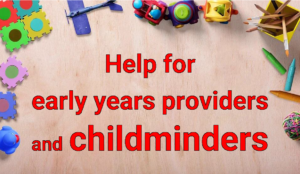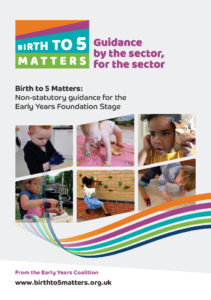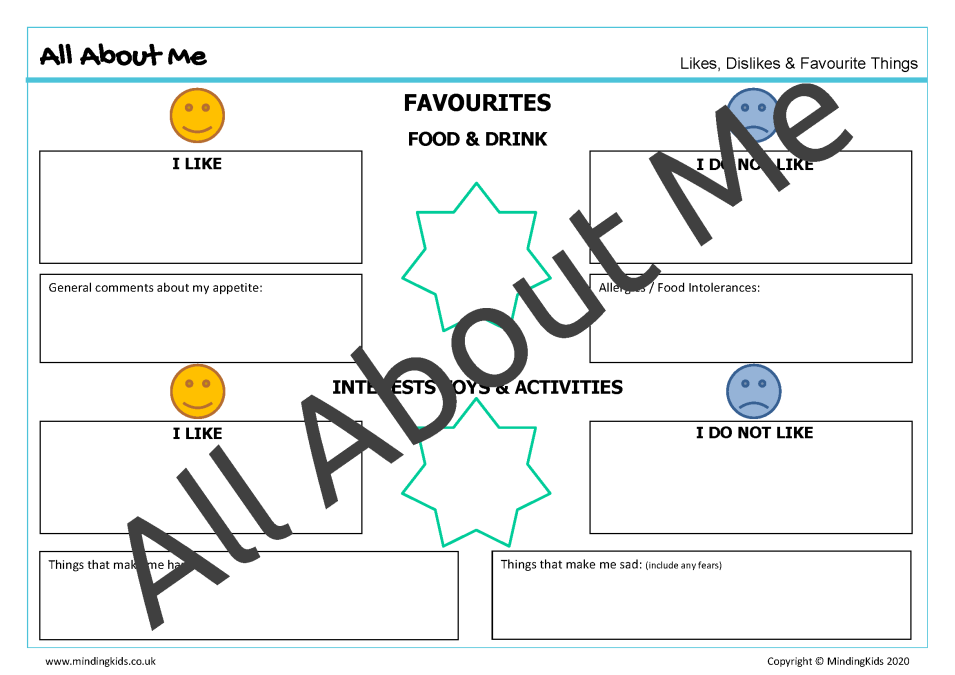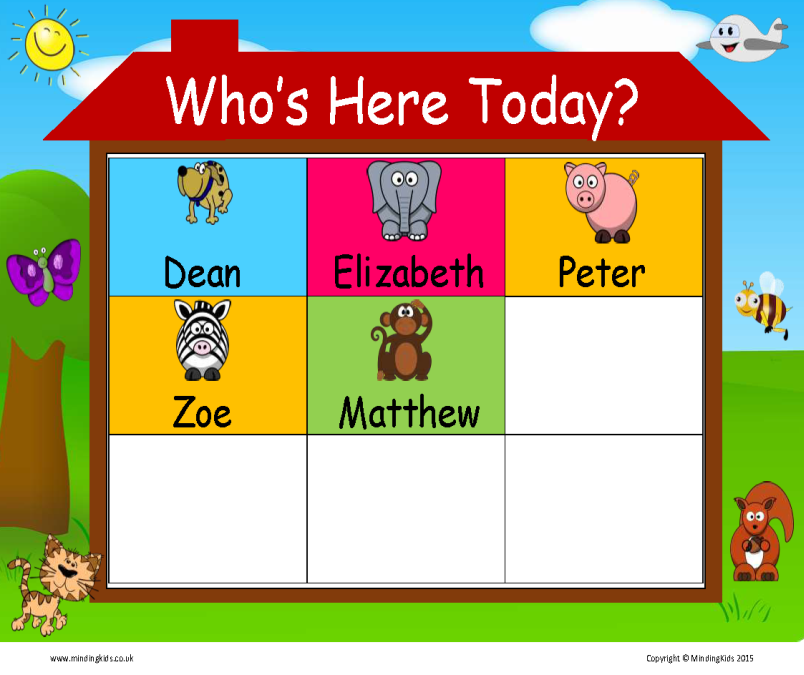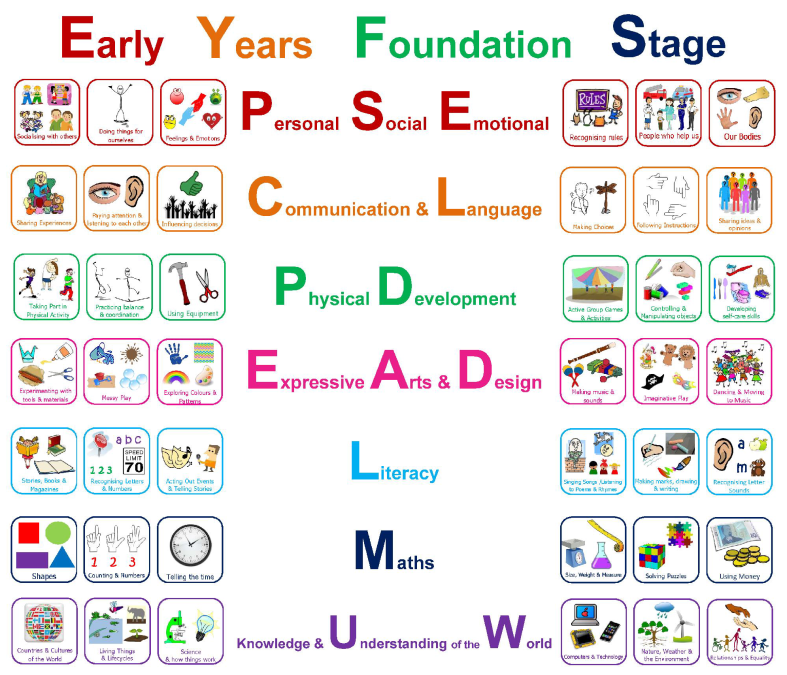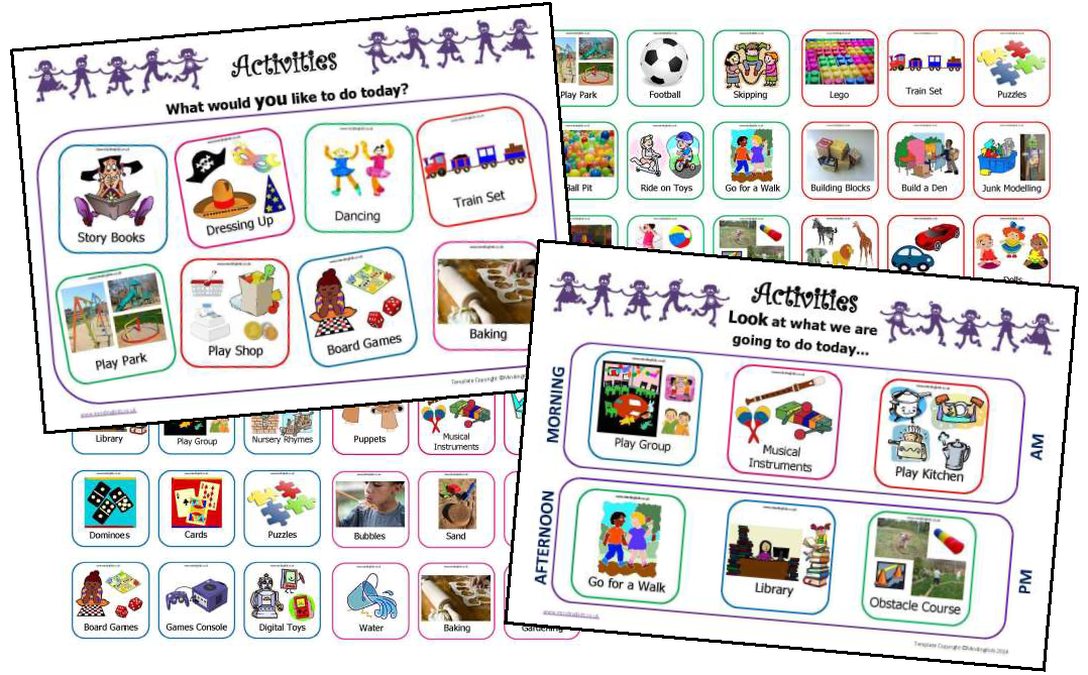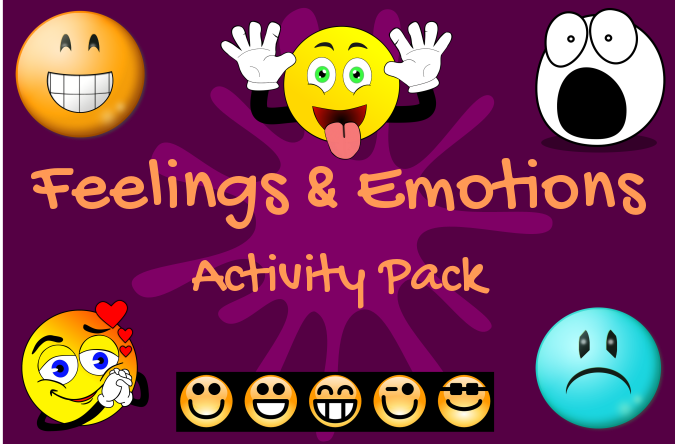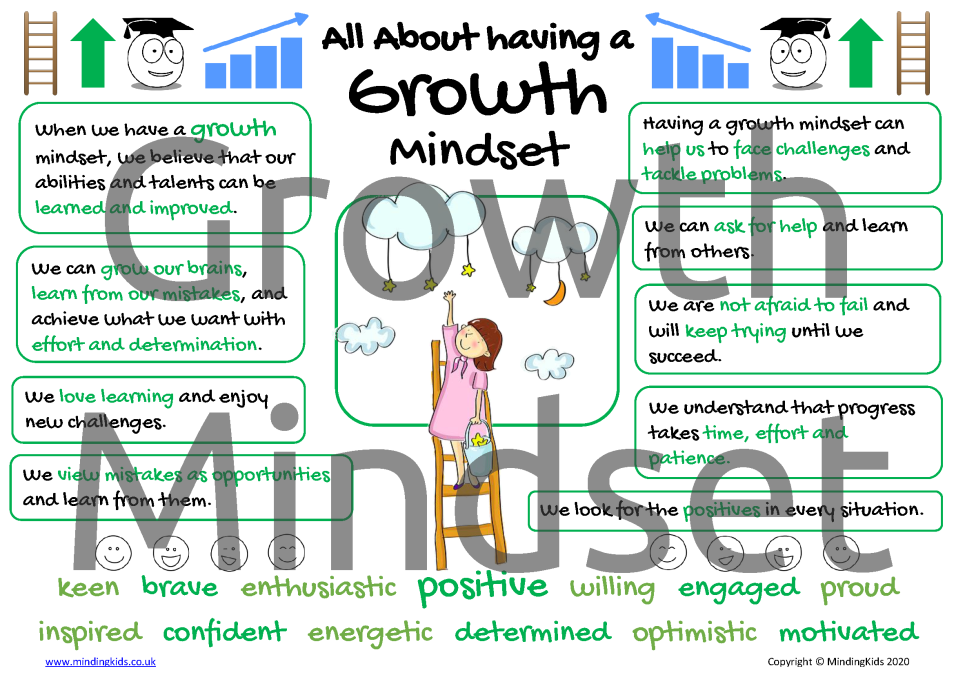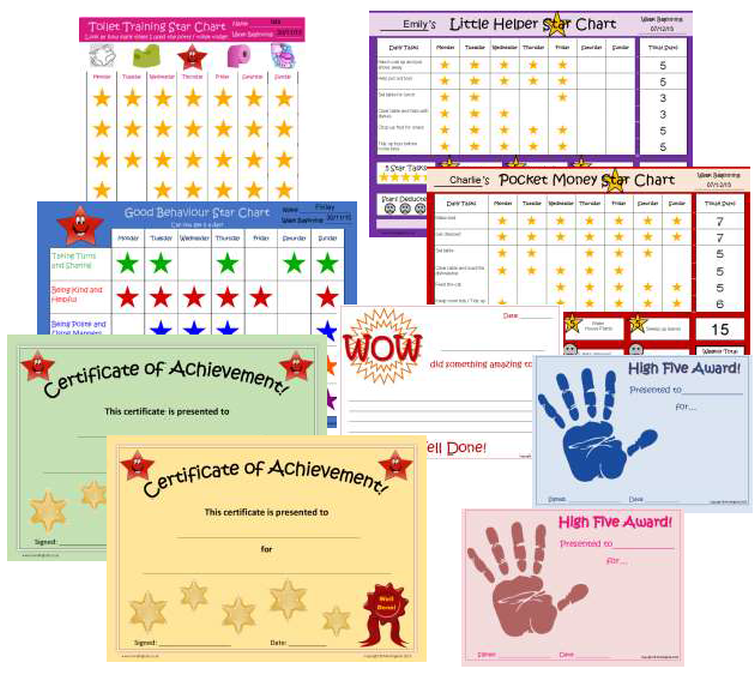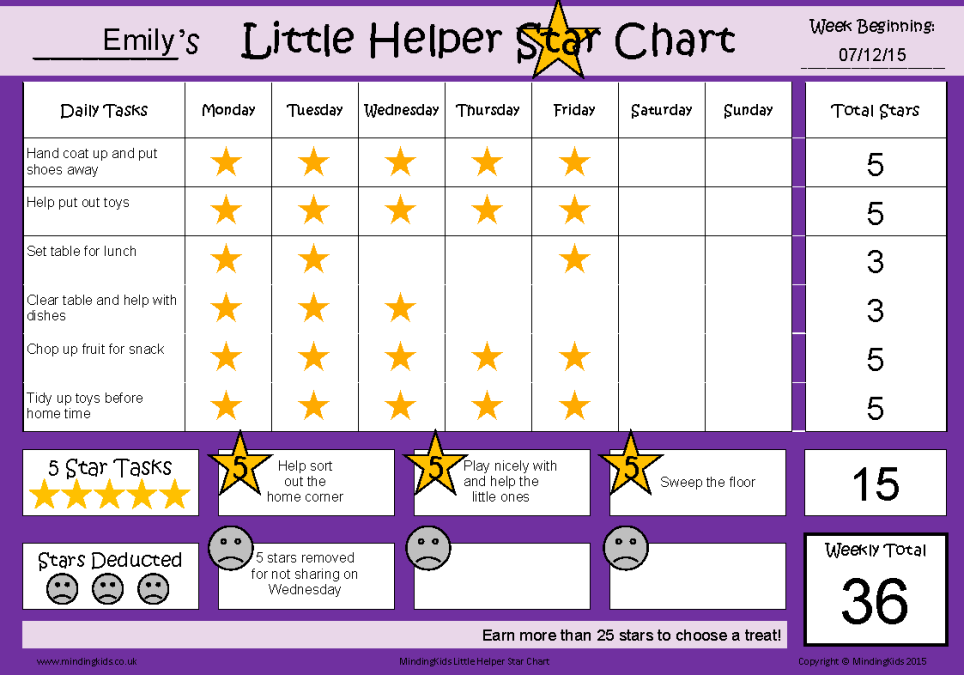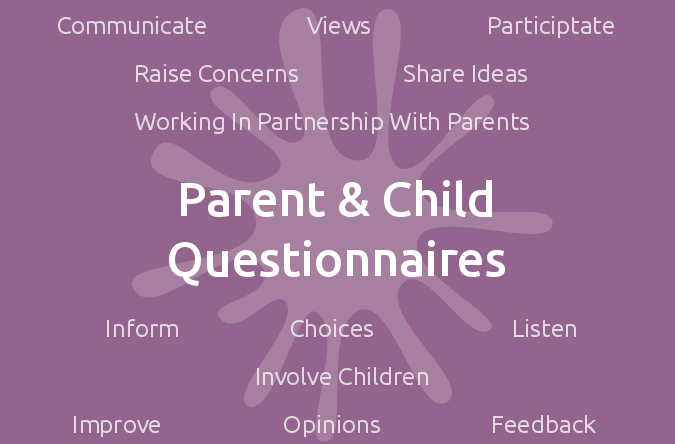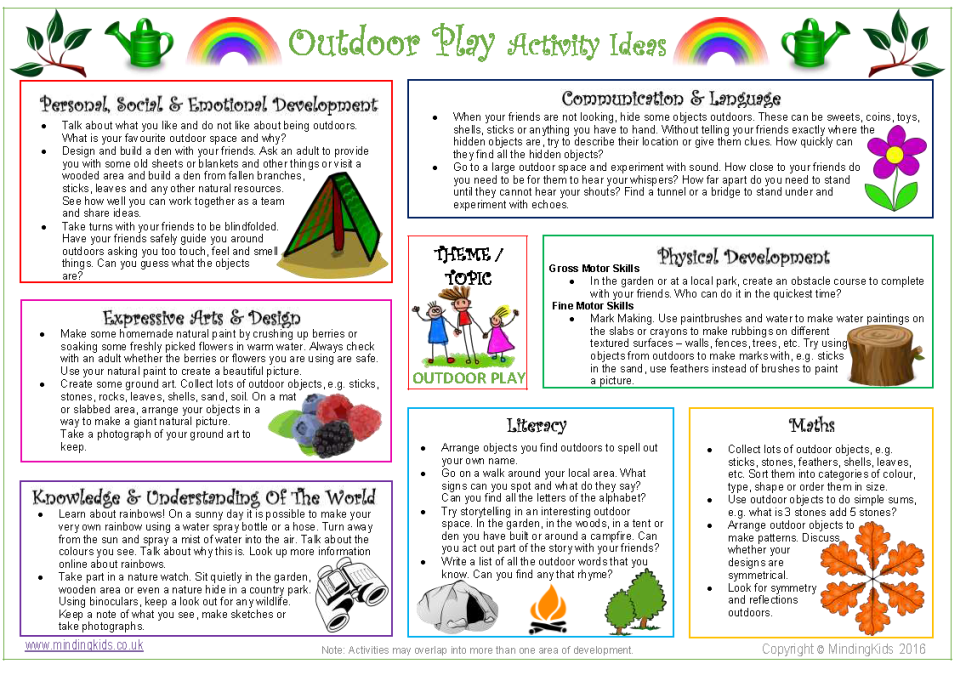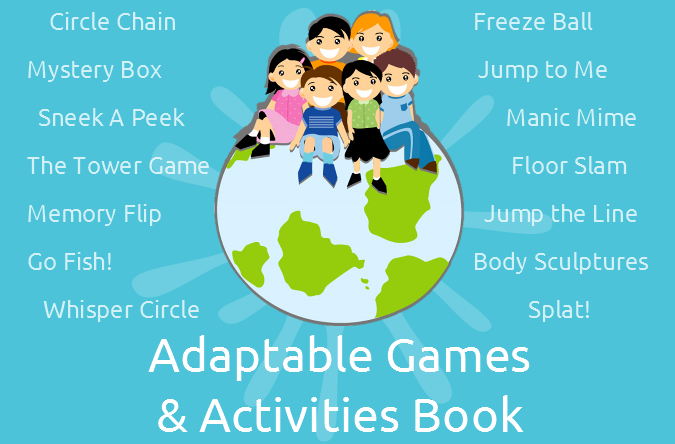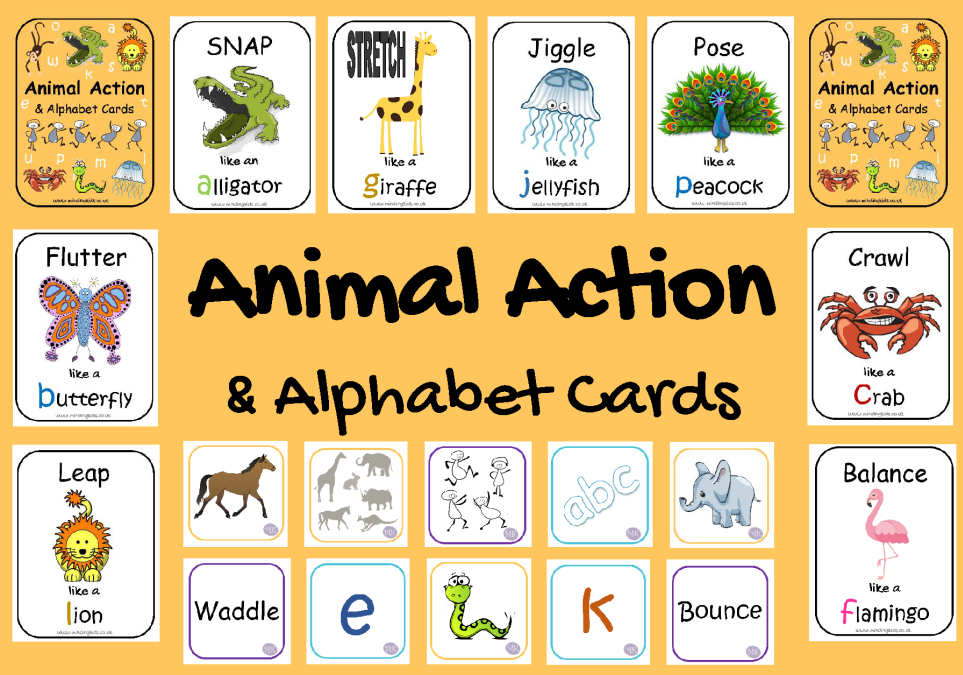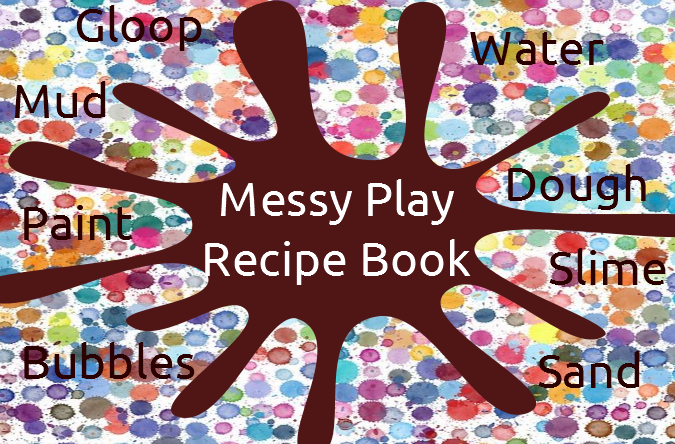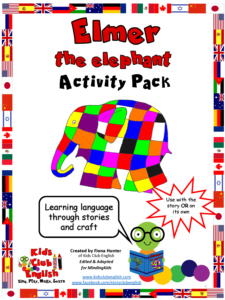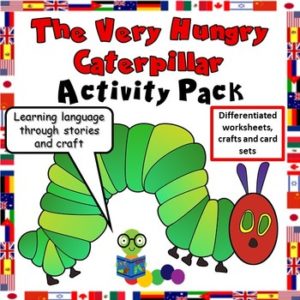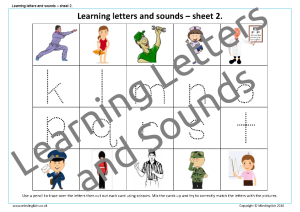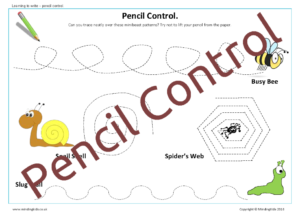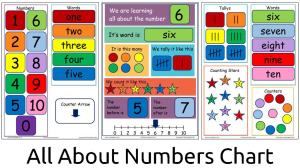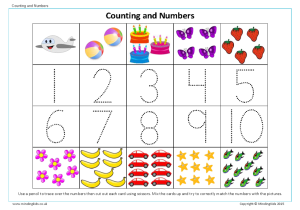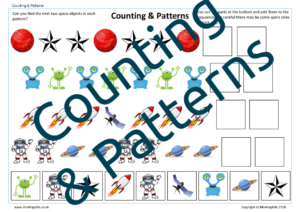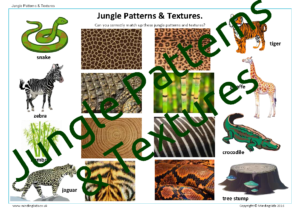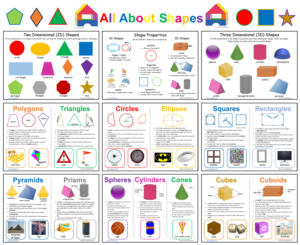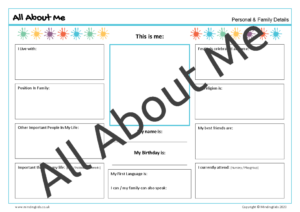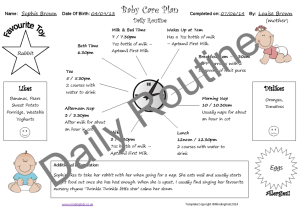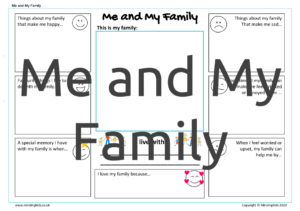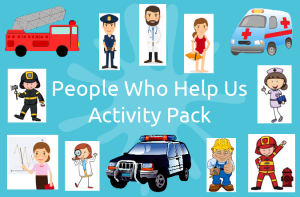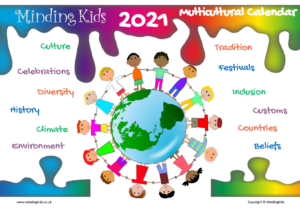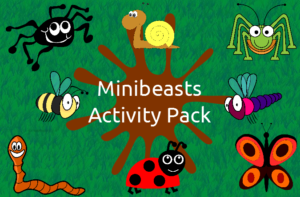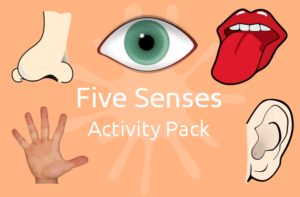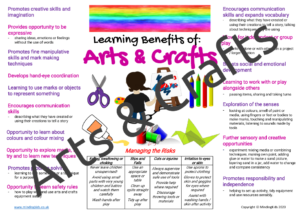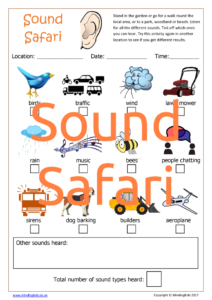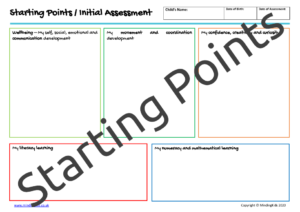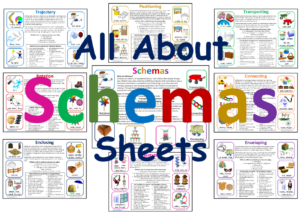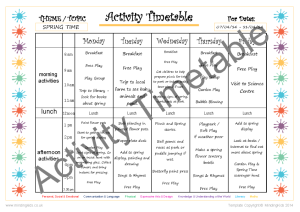EYFS – Planning YOUR Curriculum
What is Curriculum?
As an early years provider in England, your curriculum must be based on the statutory early years foundation stage (EYFS) and the 7 areas of learning.
How you deliver the 7 areas and what you would like children to learn through the spaces, interactions and experiences you provide is your curriculum.
The seven areas of learning known collectively as the ‘Educational Programmes’ have been re-written in greater detail and therefore we must review our curriculum to ensure we support development inline with the new framework.
The EYFS does not prescribe a particular teaching approach and instead encourages practitioners to consider the individual needs, interests and development stage of each child in order to plan challenging and enjoyable experiences that will support learning in all areas.
Help for early years providers and childminders has been provided along with the revised Development Matters non-statutory guidance, to assist providers in developing their curriculum and provide further direction and examples of how to support children. Providers may also wish to refer to the Birth to 5 Matters non-statutory guidance.
This guide provides a summary of the changes within the Areas of Learning descriptions and ideas to help you support development in YOUR setting.
You can also find further information about the revised framework in our EYFS 2021 – Meeting Requirements HOT TOPIC.
Communication and Language
The new description states that the development of spoken language underpins all seven areas and emphasises the importance of high-quality adult-child interactions in a language-rich environment.
We need to:
✔ Provide high quality Interactions
How we interact and communicate with children has a significant impact on learning and behaviour. Through high-quality interactions we can show children that we are interested and listening to them, that we care and respect them and that we are responding to their needs. Interactions are more likely to be successful when we focus not only on the words we say, but also our body language, gestures, eye contact and expressions. In addition to building trusting relationships, positive interactions encourage communication, social skills and many other areas of learning.
❓Think about ways you interact with children and how you could make this more positive. Consider words, body language, facial expressions, actions, songs, etc.
✔ Create a Language-rich environment
Children can make good progress with early language development when they are surrounded by language in a wide range of contexts.
❓Think about all the ways you use and expose children to language in your setting and how you can build further on this. Consider conversations, stories, role play, rhymes, songs, visual cues, props and displays.
✔ Support Listening and Understanding
Listening and attention skills play an important part in children’s overall communication development. When activities are offered that capture children’s interests, attention can be held for longer leading to greater and deeper understanding.
❓Think about methods that you use to support children’s listening and understanding skills. Consider individual child interests, offer activities that will encourage children to hold their attention, focus on sounds and take time to listen and respond to children through every day interactions.
Personal, Social and Emotional Development
The updated guidance refers to the importance of attachments, and includes additional information on self-care and healthy eating. Self-care has also moved to this area from Physical Development.
We need to:
✔ Help children learn to express, interpret and process Emotions
Poor emotional skills can have a significant impact on learning therefore it is crucial that we support children in learning how to recognise, express and deal with various emotions. Behaviour is often an expression of feelings or emotions and as practitioners we must be aware of this and help children to react and respond appropriately in order to express how they are feeling.
❓Think about your setting, daily routine and the activities on offer and how children’s emotions are supported. Do you help children to recognise and talk about their emotions? Do you expand learning through stories, visual prompts and games?
✔ Support children’s Sense of Self
Allowing children to learn about themselves, build strong identities and explore and interact with others and their surroundings is essential for building confidence and a strong sense of self. Children need to feel safe in their surroundings, be free to make choices, encouraged to be independent and be given opportunities that will allow them to challenge themselves.
❓Think about how you take into account and respond to children’s interests allowing them to build on what they know. How do you help children learn about themselves, their culture, community and important people in their lives? How do you promote their independence and ensure they feel valued and understood?
✔ Support positive, nurturing relationships
Children thrive when they are allowed to develop positive, nurturing relationships and strong attachments. Relationships help children to understand their emotions and those of others and can influence many other factors of their development. Building positive, trusting relationships with children and their families is important for supporting wellbeing and emotional development.
❓Think about the relationship you have with each child and their family. How do you ensure children and families feel welcome and included? How do you build trusting relationships, work with families to further support learning at home and help them to develop confidence in their role as the child’s first and most important educator? Do you provide adequate opportunities for children to interact with others so as they learn how to build friendships, cooperate and resolve conflicts?
Physical Development
The new description highlights the importance of physical development to children’s all-round health and development, including social and emotional well-being. There is also greater emphasis on the link between gross and fine motor skills.
We need to:
✔ Provide opportunities to build core strength and coordination
Children must develop core strength and coordination in order to move confidently, manipulate objects and use tools and materials. Core strength determines a child’s ability to move and sustain a position. Coordination is how the brain communicates with and controls the movement of body parts.
❓Think about the experiences and spaces you provide that enable children to explore movement, build strength, coordination, balance and develop both gross and fine motor skills. Do children experience a variety of both indoor and outdoor spaces that provide opportunities to be active and healthy? Are children allowed to experiment with tools, small parts, take part in sensory play and experiment with manipulating materials?
✔ Support the development of Gross Motor Skills
Gross motor skills are essential for a child’s wellbeing giving them confidence in movement and the ability to become independent as well as socialise in play.
❓Think about how you ensure children are given opportunities for physical, active play each day. What resources and equipment do you use to encourage children to explore movement and develop gross motor skills. Do you allow opportunities to be outdoors each day and encourage being active with others? Are you aware of each child’s physical abilities and provide suitable experiences to support their interests and development?
✔ Support the development of Fine Motor Skills
Through the development of fine motor skills, children learn to move and manipulate objects, use small parts and tools and develop self care skills including dressing and feeding themselves.
❓Think about the experiences you provide that enable children to explore small parts, use tools, move and manipulate materials, develop hand-eye coordination, make marks, explore senses and build on self-care skills. Are children allowed to try things for themselves and develop skills through daily routines and activities? Are there opportunities to explore the natural environment and for sensory play?
Literacy
Emphasises is given to the importance of pre-reception literacy learning ‘It is crucial for children to develop a life-long love of reading’. The updated guidance explains the link between language comprehension and later reading and writing.
We need to:
✔ Support Reading comprehension
Through reading and listening to stories, children can learn so much about the world around them whilst also learning new vocabulary, building on listening and attention skills and enhancing overall language development.
❓Think about the opportunities you provide that encourage children’s interest in books, listening and attention skills and comprehension. Do children have access to various types of age appropriate books including board books, cloth books, books that make sounds, rhyming stories, texture books, ones with bright colours, shiney papers, etc. Do you enhance story telling activities with props, visual cues, story baskets, puppets, small world toys, etc? Do you offer reading activities that are linked to children’s interests and allow them to choose books and give them time to talk about stories?
✔ Allow children to Explore Words
Word reading and language comprehension are essential for literacy skills. Children must learn to recognise and distinguish sounds then associate these sounds with written letters and words. Through the exploration of sounds and words, children can build on phonological awareness, expand their vocabulary and learn to use expressive language and grammer to further develop reading skills.
❓Think about how you help children to learn new words through activities and daily routines. Do you provide opportunities for children to hear and listen to sounds or create their own sounds? Do you play with words, rhymes, songs and make up your own? In addition to books, how else do you support children in recognising familiar letters, words, symbols and signs?
✔ Encourage Writing Skills
Writing and mark making can be used to communicate our ideas and express ourselves. Before children can write, they must first of all develop fine motor skills and good hand-eye coordination in order to hold and control their mark making tools. They must then learn to refine and control their movements in order to create marks that have meaning and form recognisable letters and words.
❓Think about how you provide appropriate mark making and writing activities for each child. How do you support children with the development of fine motor skills, hand-eye coordination? What activities do you provide that enable children to explore making different marks and experiment with different tools and materials? Do you support children in recognising that marks, signs, symbols, letters and numbers can be used for a purpose by helping child to associate meaning with marks, e.g. name writing, making shopping lists (even with drawings), notes, reminders, etc.
Mathematics
The new guidance explains that children should develop a deep understanding of the numbers to 10 with greater clarity on counting and comparing quantities. Children should be provided with opportunities to develop their understanding of shapes, spatial reasoning, and measures through a positive ‘have a go’ approach.
We need to:
✔ Support a deep understanding of Numbers
In order for children to develop mathematical skills they need a deep understanding of numbers. By reception level, children should be able to count confidently and understand the relationships and patterns of numbers up to 10.
❓Think about how you encourage children to explore and use numbers through activities, every day experiences and daily routines. Do you involve children in stories, rhymes, action songs, and singing that include numbers, counting and the sequencing of numbers? Do you use number names and language during play and everyday routines so that child can develop their understanding and recognition of numbers and language around numbers. What activities do you offer that allow children to count, sort and compare groups of items?
✔ Help children learn about Patterns and Connections
Learning about patterns and connections is important for later mathematical thinking and reasoning. Children have an instinctive idea of patterns and begin to spot similarities and connections from a very young age. Building on their awareness of patterns and connections, children learn to use this knowledge in their own logic and predictions.
❓Think about how you allow children to explore and recognise patterns in the world around them and in every day experiences and routines. Do you use appropriate language to support children’s understanding of patterns and connections and use stories, rhymes and songs to further explore how patterns and sequences occur in speech and music? Do you provide opportunities for children to explore patterns in nature, talk about similarities and differences, point out repetition or help children to notice any irregularities in patterns?
✔ Support children with Spatial Reasoning
The development of spatial reasoning allows children to understand the world around them in 3 dimensions and how objects can move and interact with one another. Spatial reasoning is essential for problem solving.
❓Think about the opportunities children have to physically experience different environments around them and to investigate moving in and out of interesting spaces or creating enclosures, e.g dens, play equipment and tunnels. Do you provide activities that allow children to explore different sizes and shapes of objects and how they interact with each other. e.g. how objects fit into each other, the capacity of different sizes and shapes of containers, building with various materials. Do you use spatial and positional language during play and everyday routines to further encourage children’s understanding of spatial relationships.
Understanding the World
The revised description emphasises the importance of providing children with a broad range of experiences and opportunities that allow them to build knowledge and make sense of the world around them, including visits and meeting others within the community, interacting with nature and exploring technology.
We need to:
✔ Build on Personal Experiences
All children are individuals and we must take into account their life stories from their earliest days in order to understand the various factors and influences that shape who they are and their unique development. Positive experiences and opportunities help children to thrive, develop and reach their potential.
❓Think about how you gather information from families to understand each individual child’s circumstances and use effective communication methods to share and build on personal experiences. Encourage children to talk about and reflect on their experiences, thinking about what they know and how they can further build on this. Provide a range of resources and experiences that capture interest and help children to learn about the world around them.
✔ Encourage understanding of a Diverse World
Children begin to understand and respect the diversity of our world through learning about their community, different countries, cultures, beliefs, abilities and that every one of us is unique.
❓Think about the experiences you provide that allow children to learn about their country, community and differences in age, culture, disabilities, ethnicity, gender, religion and sexual orientation. Do the resources you provide reflect the diversity of our world, for example books, puzzles and other toys which provide positive images and examples of the diversity of life in our society. Do you help children to feel good about themselves and others, by celebrating the differences which make us all unique individuals.
✔ Support Widening Vocabulary
In the context of Understanding the World, children should be learning new words daily as they explore the world around them. Enriching and widening vocabulary contributes positively to children’s literacy and language skills.
❓Think about how you use activities and daily routines to introduce children to new vocabulary as they learn new things and explore the world around them. Do you use the correct vocabulary to describe social, cultural, ecological and technological experiences with children so as they can hear and learn new words? Do you encourage children to talk about their experiences and explain what they know and have learned giving them further opportunity to use new vocabulary and embed understanding.
Expressive Arts and Design
The new guidance explains the importance of providing children with opportunities to explore and develop their creative skills and cultural awareness. It explains a wider variety of ways that children can develop their imagination and creativity, which is crucial for developing their understanding, self-expression, vocabulary and communication skills.
We need to:
✔ Encourage Imagination and Creativity
Children need opportunities to investigate the world around them, experiment with different media and materials and engage with the arts in order to develop their artistic and cultural awareness. Through imagination and creativity children can express their ideas, build on confidence and develop further curiosity and desire to learn more about the world around them.
❓Think about the range of activities and experiences you provide that stimulate exploration, spark imagination and allow children to build on creative skills. Are children given opportunities to investigate and experiment with different media and materials, e.g. fabrics, small parts and fastenings, malleable materials, paints, chalks, etc as well as explore natural materials and sensory resources. Are children provided with opportunities to listen to and make music, see examples of art work, experience dance and move their bodies to sounds? Do you provide opportunities for imaginative play and join in with children, allowing them to take the lead and express their ideas. Do you observe children’s responses, encourage them to talk about their experiences and allow them to repeat and expand on activities they have enjoyed?
✔ Encourage Self-expression
Opportunities to explore using a range of media and materials allows for the development of self-expression as children learn to express their thoughts, actions and ideas in different ways. The quality and variety of opportunities children experience enables them to develop understanding, build on vocabulary, build confidence in their own self-expression whilst also learning to engage with the arts and appreciate the creative work of others.
❓Think about the opportunities children have to explore and experiment with a range of open-ended materials. Are children able to access natural resources, investigate small parts, experiment with recyclable materials or explore messy play activities? Do you allow children to get immersed in creativity, allowing them time to explore their own thoughts and ideas and try new things? Do you also encourage children to talk about what they are doing, and provide opportunities for children to share their creations? Do you help children expand on communication and language skills asking open ended questions and introducing new words to describe the properties of materials or processes?
✔ Help children learn about Communicating through arts
Through communication and expression, children are able to share their thoughts and ideas and show what they know and understand. The ability to communicate through the arts and express their ideas in a variety of ways including role-play, working with materials, singing, dancing, building or sculpting enables children to express their thoughts, share ideas whilst building on emotional confidence and wellbeing. For children who do not get have the language skills or use English as an additional language, the communicating through the arts may be a child’s first method of communication.
❓Think about the quality and variety of experiences provided in your setting that allow children to see, hear and participate in the exploration of the arts. Think about multi-sensory activities and opportunities to explore colours, lights, reflections, sounds and noise both indoors and outside. Do you have a range of resources that allow children to touch and manipulate different media and materials and encourage children to use their imaginations, experiment freely and express their ideas? Do you provide children opportunities to see and experience the arts and experience the creativity of others, for example through visiting museums, galleries or watching performances.
In Summary…
There so much for children to explore and so many possibilities to learn! You will also find that activities you offer will often support development in more than one learning area.
If you feel a bit overwhelmed and confused where to start, then this is exactly what you need to do…establish starting points for each child.
Taking the time to observe and assess the development stage of each child within the development areas will help you to establish what they already know, whether they are meeting expected milestones, what they require further support with as well as their interests and preferred learning styles (Schemas). You can then use all of this information to think about what activities and experiences you can provide to best support their progress.
However you plan, the primary focus of your curriculum should be the individual needs, interests and development stage of each child.
⭐ What interests and stimulates each child so as you can spark curiosity and hold their attention?
⭐ Are children meeting expected development milestones? What activities and experiences can you offer to help them progress?
⭐ How can you build on attachments, nurture positive relationships and make the best use of the resources and spaces available to you to plan challenging and enjoyable interactions and experiences?
⭐Become a MindingKids Member to ACCESS EVERYTHING!


